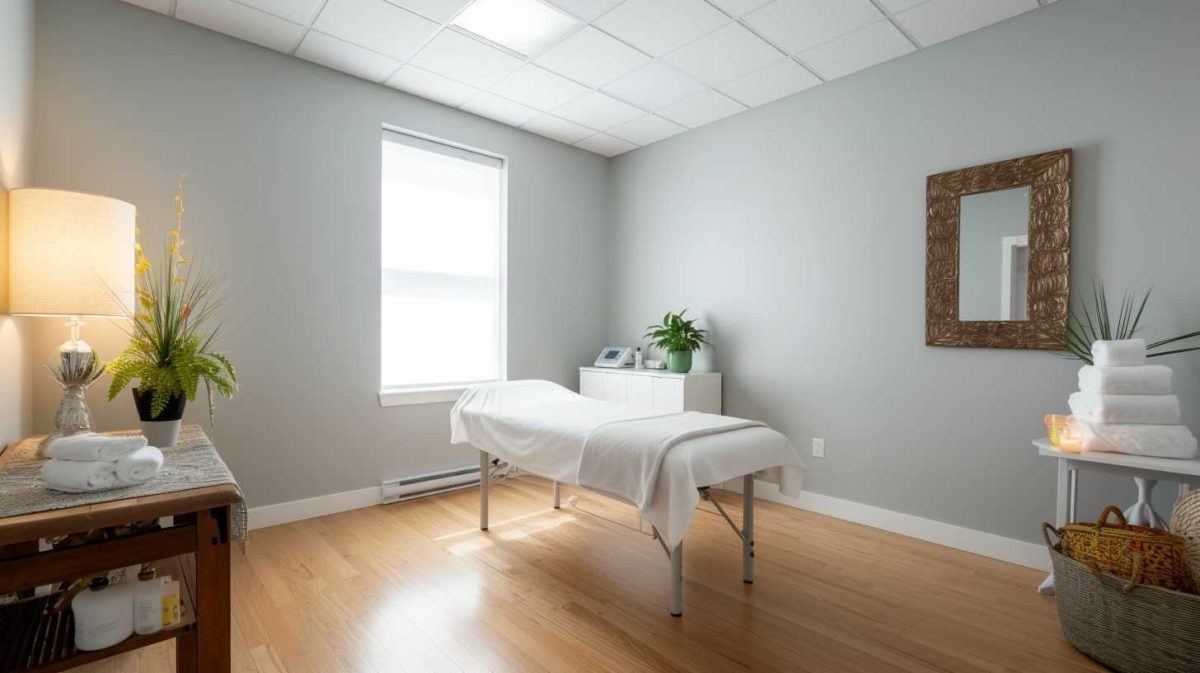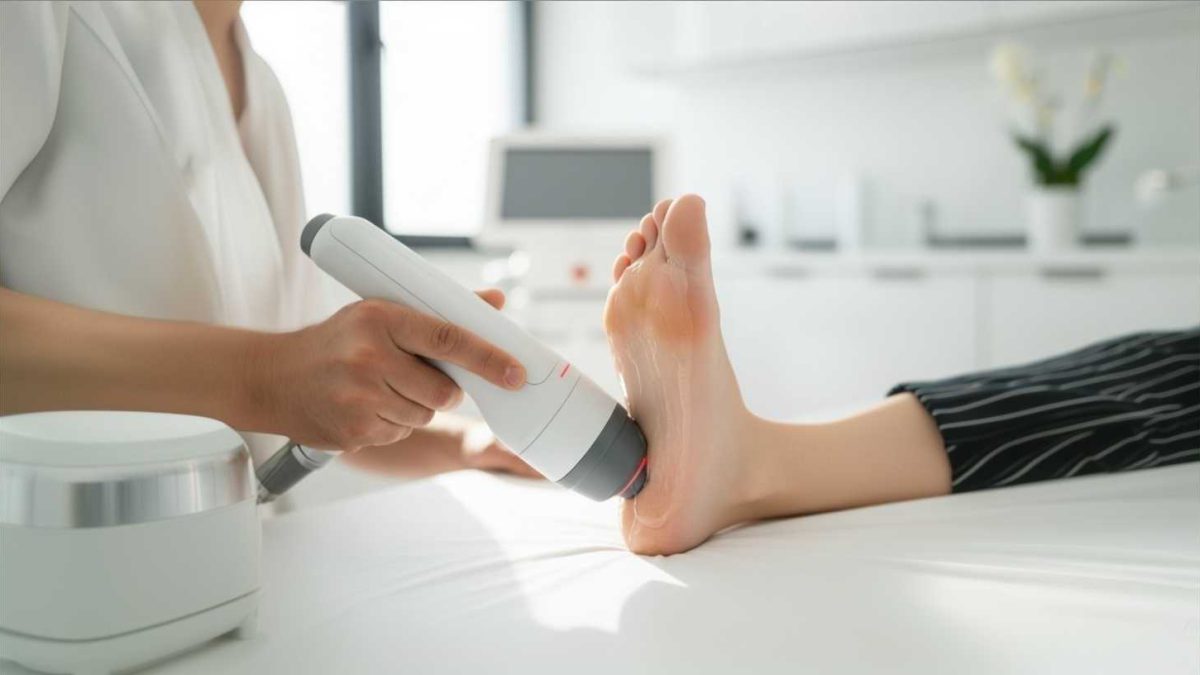
Physiotherapy vs. Chiropractic: A Deep Dive into Which is Right for You (And Why You Might Need Both)
27 September 2025It starts as a dull ache, a minor annoyance you dismiss. But soon, it becomes an unwelcome morning ritual. That first step out of bed sends a sharp, stabbing pain shooting through your heel, forcing you to limp your way to the bathroom. You find yourself hesitating before standing up after a meeting, knowing you’ll have to endure those painful first few steps. The simple joy of a walk in the park, keeping up with your kids, or even a trip to the grocery store is now overshadowed by a persistent, debilitating pain.
If this sounds familiar, you are not alone. You are likely one of the millions of people dealing with chronic heel pain, a condition most commonly caused by Plantar Fasciitis. You’ve probably tried everything—stretching, icing, expensive shoe inserts, maybe even just resting and hoping it would go away. But for chronic cases, these passive treatments often provide little to no lasting relief, leaving you frustrated and feeling like you’re out of options.
But what if there was a modern, non-invasive treatment that didn’t just mask the pain, but instead, stimulated your body’s own natural healing mechanisms to fix the problem at its source? It’s time to introduce you to Shockwave Therapy.
What is Plantar Fasciitis? Understanding the Source of Your Pain
Before we explore the solution, it’s crucial to understand the problem. Imagine a thick, fibrous bowstring running along the bottom of your foot, connecting your heel bone to your toes. This is your plantar fascia. According to the Johns Hopkins Medicine health library, it’s designed to absorb the immense stress and strain we place on our feet every day.
Plantar Fasciitis occurs when this ligament is over-stressed, leading to micro-tears, inflammation, and degeneration. Over time, the body’s healing process can stall, resulting in the development of thick, painful scar tissue. This is when the condition becomes chronic.
While it can happen to anyone, several factors can increase your risk:
- Foot Mechanics: Having flat feet or very high arches can alter the way weight is distributed across your feet.
- Activity Level: A sudden increase in activity, long-distance running, or jobs that require you to be on your feet all day can overload the plantar fascia.
- Footwear: Wearing shoes with poor arch support or soft soles can contribute to the problem.
- Body Weight: Excess pounds put extra stress on this crucial ligament with every step you take.
The hallmark symptom is that intense pain during the first few steps after a period of rest, which may lessen as you move around but often returns after long periods of standing or activity. When this cycle continues for months, it’s a clear sign that the tissue is not healing properly on its own.
Introducing Shockwave Therapy (ESWT): A Modern Breakthrough for Chronic Pain
For those trapped in the cycle of chronic pain, Extracorporeal Shockwave Therapy (ESWT), or simply Shockwave Therapy, represents a significant leap forward. This is not an electrical shock, but a highly effective, non-invasive technology that uses powerful acoustic waves to target injured tissue deep within the body. The procedure has been recognized by organizations like the American Academy of Orthopaedic Surgeons as a viable option for a number of tendon and soft tissue conditions.
Think of it as a way to restart a stalled healing process. When an injury becomes chronic, the body often gives up on trying to repair it. ESWT acts as a catalyst, sending a focused mechanical pulse into the damaged tissue to wake up the cells and trigger a powerful, natural healing response.
How Does Shockwave Therapy Actually Work?
The science behind Shockwave Therapy is fascinating. In simple, reassuring terms, the acoustic waves generate a series of powerful effects at the cellular level:
- It Stimulates New Blood Flow: The primary reason chronic injuries don’t heal is a lack of blood supply to the damaged tissue. The micro-trauma caused by the shockwaves triggers a process called neovascularization—the formation of tiny new blood vessels. This new blood flow, a key mechanism of healing documented in clinical studies, brings a fresh supply of oxygen and nutrients directly to the injury site, which is essential for repair.
- It Breaks Down Scar Tissue and Calcifications: In chronic conditions like plantar fasciitis and tendon pain, the body often lays down disorganized scar tissue or even calcium deposits (like heel spurs). The mechanical force of the shockwaves helps to physically break down these adhesions, allowing healthy new tissue to grow in its place.
- It Re-ignites the Healing Cascade: The therapy essentially turns a chronic, stagnant injury back into an acute one that your body recognizes and actively works to heal. It stimulates the release of growth factors and activates stem cells in the area, creating a robust inflammatory response that is the first critical step in tissue regeneration.
- It Provides Immediate Pain Relief: The waves have an analgesic effect. They over-stimulate the pain-transmitting nerves in the area, which can temporarily block pain signals from reaching the brain (a concept known as the Gate Control Theory of pain). It also helps to disperse a pain-mediating chemical called “Substance P,” providing more lasting pain relief as you heal.
In short, Shockwave Therapy doesn’t just put a bandage on the problem—it empowers your body to rebuild and heal itself from the inside out, offering a safe and effective alternative to steroid injections or surgery.
More Than Just Heel Pain: Conditions We Treat with Shockwave
While incredibly effective for plantar fasciitis and heel spurs, the healing power of Shockwave Therapy is used to treat a wide range of chronic soft tissue and tendon pain conditions throughout the body. At Healthway Health Centre, we leverage this advanced technology to help our patients find relief from numerous stubborn injuries.
Foot & Ankle Conditions:
- Plantar Fasciitis & Heel Spurs: The most common application, targeting pain in the heel and arch of the foot.
- Achilles Tendinopathy: Chronic pain and stiffness in the large tendon at the back of the ankle, a condition thoroughly explained by the Cleveland Clinic</a>.
Elbow, Wrist & Hand Conditions:
Tennis Elbow (Lateral Epicondylitis): Pain on the outside of the elbow, common in racquet sports and manual labour.
- Golfer’s Elbow (Medial Epicondylitis): Pain on the inside of the elbow.
Shoulder Conditions:
- Frozen Shoulder (Adhesive Capsulitis): To help break up adhesions and improve range of motion in a stiff, painful shoulder.
- Calcific Tendonitis: Breaking down calcium deposits within the rotator cuff tendons.
Hip, Knee & Leg Conditions:
- Patellar Tendonitis (Jumper’s Knee): Pain in the tendon connecting the kneecap to the shinbone.
Sciatica: Can be used to target trigger points and tight muscles (like the piriformis) that contribute to sciatic nerve pain.
Early-stage Avascular Necrosis of the Femoral Head: A serious condition where the "ball" of the hip joint loses blood supply; shockwave can help stimulate revascularization.
Muscle Strain & Lumbar Strain: Targeting chronic trigger points and scar tissue in strained back or leg muscles.

What to Expect During Your Shockwave Therapy Session
The idea of “shockwaves” can sound intimidating, but the process is straightforward, safe, and typically well-tolerated. Here’s a step-by-step overview of what your visit will look like:
- The Consultation and Assessment: Your treatment always begins with a thorough assessment by one of our expert clinicians. We need to confirm your diagnosis and ensure that Shockwave Therapy is the right choice for your specific condition.
- Locating the Target Area: Your therapist will use their hands to pinpoint the exact location of maximum pain or tissue damage.
- Applying the Gel: A thin layer of ultrasound gel is applied to your skin. This ensures that the acoustic waves are transmitted efficiently and smoothly into your body.
- The Treatment: The therapist will then place the applicator head on the target area and begin the treatment. You will hear a loud clicking sound and feel a tapping or thumping sensation. Some patients experience mild discomfort during the session, but the intensity can be adjusted for your comfort. A typical treatment session is very short, usually lasting only 10 to 15 minutes.
- After the Session: It’s normal to experience some mild soreness or tenderness in the area for a day or two after treatment. This is a positive sign that the therapy has initiated a healing response. We advise patients to avoid high-impact activities or aggressive stretching for 48 hours after their session to allow the process to work.
- Your Treatment Plan: Shockwave Therapy is not a one-time fix. It’s a cumulative process. For the best possible outcome, a course of 3 to 5 sessions, typically spaced one week apart, is recommended. Many patients begin to feel significant relief after just one or two sessions, with continued improvement in the weeks that follow as the tissue continues to regenerate.
Take the First Step Towards Lasting Relief
Living with chronic pain is exhausting. It wears you down physically and mentally. You deserve a solution that does more than just temporarily dull the ache. You deserve a treatment that addresses the root cause of your injury and helps your body truly heal. Shockwave Therapy may be that solution.
Tired of living with stubborn pain? Contact us today to find out if you are a candidate for Shockwave Therapy and take the first step towards lasting relief.





